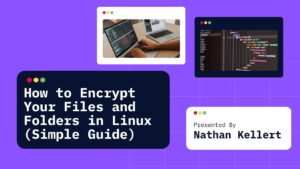So you’re prepping for a data science or machine learning interview and boom – here comes time series questions outta nowhere. Yup, they love to throw those in, especially if the job has anything to do with forecasting, stock prediction, or even just understanding trends over time.
Don’t worry tho, I got you. Here’s a bunch of must-know time series interview questions (with simple answers) to help you feel confident when that recruiter starts grilling you. Let’s go 🚀
Table of Contents
1. What is Time Series Data?
Alright this one’s basic but super important. Time series data is just data that’s collected over time – usually at regular intervals. Think stock prices daily weather, hourly website traffic, etc. The order of data points matters a lot in time series.
2. What makes time series different from other data?
Unlike regular datasets where you can shuffle rows randomly, time series is all about order and sequence. It has this thing called temporal dependency, which means past values influence future values. So you gotta be careful how you split and process it.
3. What is Stationarity and why does it matter?
This one pops up a lot. A time series is stationary if its stats (mean, variance, autocorrelation) stay constant over time. Many models like ARIMA actually require the data to be stationary. So if it’s not, you usually do stuff like differencing or transformation to make it behave.
4. How do you check if a series is stationary?
You can:
- Plot it (visual check)
- Use rolling mean/variance
- Do a Dickey-Fuller test (ADF test)
If p-value is low (like under 0.05), it’s probably stationary. If not, you’ll need to do some fixing.
5. What is Autocorrelation?
Autocorrelation tells you how related a current time point is to its past values. High autocorrelation at lag 1? That means the value just before has a strong influence on the current one.
It’s useful for identifying patterns and deciding what lag terms to use in models.
6. What are ACF and PACF?
They look scary but don’t stress.
- ACF (Autocorrelation Function) shows how current values relate to past values at various lags.
- PACF (Partial Autocorrelation Function) shows direct relationships after removing the effect of earlier lags.
These are used when tuning ARIMA models – they help you figure out how many lag terms (p and q) to use.
7. Explain ARIMA in simple words
Sure. ARIMA stands for:
- AR – Autoregressive (uses past values)
- I – Integrated (makes series stationary)
- MA – Moving Average (uses past forecast errors)
You tune it using three terms: p, d, q. It’s like the go-to classic model for time series forecasting.
8. What’s the difference between ARIMA and SARIMA?
Good question. SARIMA is like ARIMA’s smarter cousin – it adds seasonality into the mix. So if your data has patterns that repeat (like monthly sales spikes), SARIMA can model that using seasonal terms.
9. How do you handle missing data in time series?
Couple ways:
- Forward fill or backward fill
- Interpolation
- Sometimes even dropping missing points (if there’s not too many)
Just be careful not to break the sequence too badly.
10. How do you evaluate a time series model?
Some popular metrics:
- MAE (Mean Absolute Error)
- MSE (Mean Squared Error)
- RMSE
- MAPE – good for percentage error
Also, visualizing predictions vs actual values helps a lot.
11. Can you use cross-validation for time series?
Yes but regular k-fold doesn’t work well ’cause it randomly shuffles data. You use Time Series Cross Validation or rolling/expanding windows to keep the temporal order intact.
12. What’s an LSTM and why is it used in time series?
LSTM (Long Short-Term Memory) is a type of neural network that’s really good at remembering stuff from the past. Unlike regular models, it can capture long-term dependencies, so it’s great for complex time series patterns.
13. What are some real-world use cases of time series forecasting?
Lots! Some examples:
- Stock market prediction
- Weather forecasting
- Sales and demand prediction
- Energy consumption
- Traffic flow analysis
Any data that changes over time is fair game honestly.
14. What’s seasonality vs trend vs noise?
- Trend – overall direction (up, down, flat)
- Seasonality – repeating patterns (daily, weekly, monthly)
- Noise – randomness, can’t really explain it
Understanding these helps with choosing the right model or pre-processing steps.
15. What tools/libraries are best for time series?
Some popular ones:
- Python:
pandas,statsmodels,prophet,scikit-learn,tensorflow,keras - R:
forecast,tseries,zoo - Also tools like Facebook Prophet and DeepAR are getting popular for fast forecasting.
Video Guide Session – Forecasting/Time Series Analysis
You can also have a look at this youtube video for better understanding and learnings.
Wrapping It Up
Time series might sound scary at first but once you get the hang of the patterns and the tools it actually becomes kinda fun. Interviewers just wanna see that you understand the basics and can apply the right methods.
So yeah, go through these questions, play around with some real datasets (like energy or stock data), and you’ll feel way more confident walking into that interview room.
Let me know if you want mock interview Q&A flashcards or even a one-pager summary. I can whip that up easy 😉
Want this turned into a cheat sheet or downloadable PDF? Just comment down below and we’ll send it to your e-mail right away.







